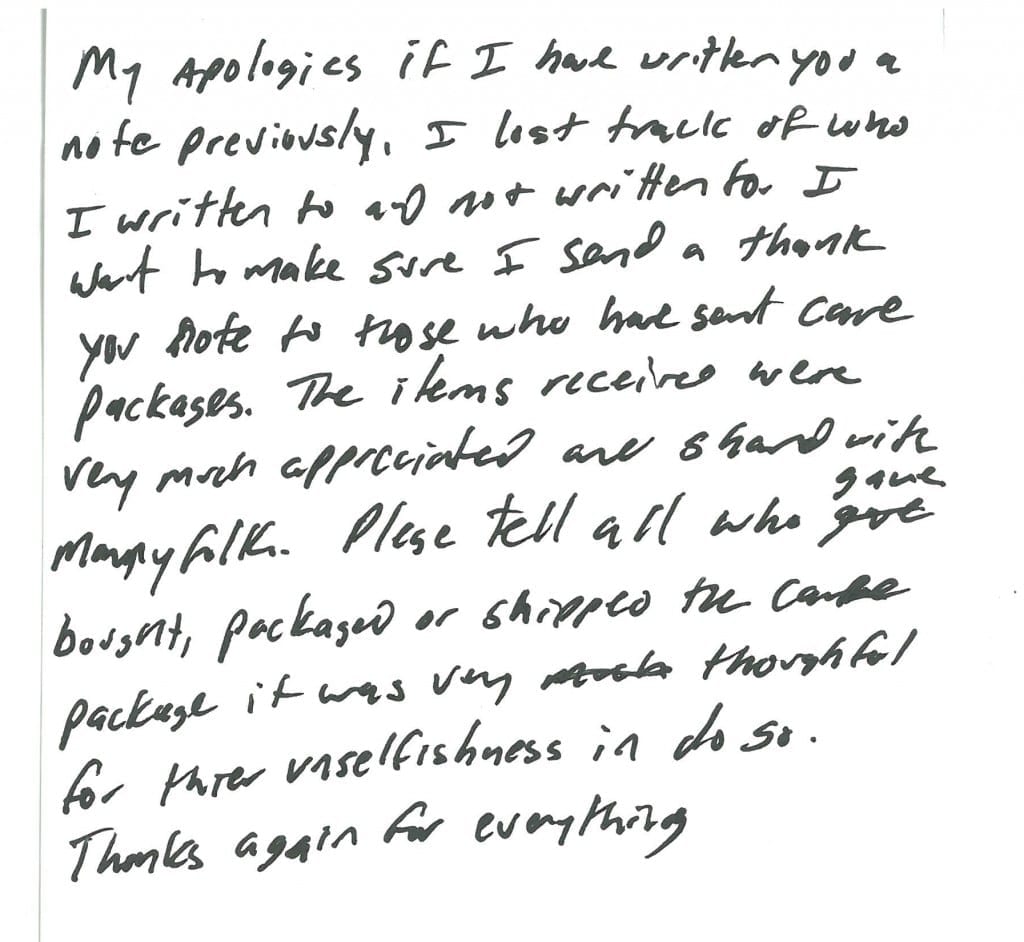
‘Staging’ is a term used by real estate agents that means to make your home appealing, therefore making it more marketable to potential buyers. Through this process, you increase your home value and become more emotionally detached from the house as it becomes less of your home. The ultimate goal of staging is to make your house feel like home to potential buyers, so they can easily envision themselves living there. Here are some tips if you are thinking about staging your home for sale.
De-clutter and De-personalize
The first step of staging is to de-clutter and de-personalize your home. Renting a storage space is a great idea. Take out any extraneous furniture so that you can maximize the space your home has to offer. Put away all personal photos and personal items, replacing a few with attractive professional photographs or prints. Furniture should be placed in groupings away from the wall. Not only will this visually create more space, but will also allow for buyers to easily move throughout the room. It is important to make sure every room is being used as it is intended to be. For example, don’t have your dining room set up as an office. Potential buyers often have a difficult time envisioning rooms differently than they appear and will want to see the room staged to meet their expectations.

It is important to have a good flow in the house. All hallways and entrances should be clear and traffic flow in rooms should be obvious. Consider putting away area rugs—showing exposed floors sometimes makes rooms appear to be bigger. If there are any built-in appliances, fixtures, or drapery that you would like to keep, remove them now. Buyers can get attached to objects they assume will come with the house and might be turned off from making an offer if they are not.
Before you show your house to potential buyers, it is a good idea to get a home inspection. In most cases, an inspection is going to be done regardless, so having it done before buyers walk through will let them see your home in its best condition. Make any minor repairs needed, such as replacing cracked or missing floorboards, updating some windows, etc. Any repairs you make will be easily paid off once you sell your home.
Ambiance
Paint color is very important when staging a house. White or off-white walls are the general rule of thumb as they create an illusion of open space and make the rooms appear as a blank canvas. Neutral colors are also great choices. Neutral include colors from nature, so think of a muted green or blue. If you want to make your home look even more spacious, paint adjacent rooms the same color. Having the color of the walls match the color of the drapes is also a great technique and makes for a seamless interior look. Darker colors can often make rooms look especially cozy, so don’t shy away from these in your bedrooms and powder rooms. If sticking with an all-white or neutral palette, considering using an accent color to give a room little bit of personality. Small pops of color will keep the room from feeling boring.

Lighting is of upmost importance during a house showing. Make sure all lights are on when showing your house and open blinds to let in as much natural light as possible. Pay attention to the lighting of each room individually. There should be three types of light in each—ambient lighting (overhead or general lighting), task lighting (under the cabinet, closet, or reading lights), and accent lighting (table or wall lamps). If the room is dark, mirrors are your best friend. Adding a large mirror or two will increase the amount of light and will even add depth to make the room feel bigger.
When staging your home, pay close attention to odors you may be releasing into the house. It is hard for people who live in a house to smell pet or smoke odors since they have become desensitized to them. Have your pets stay at a friend or family member’s house during this time, if possible. If there is a smoker who lives in the house, have them smoke outside. Don’t try to mask odors by burning scented candles or spraying air freshener—these smells can be equally as offensive as the odors can combine rather than be replaced. Get rid of odors at the source—scrub down the house, take out trash regularly, and don’t cook foods with strong odors.
As a finishing touch to your home’s ambiance, place freshly cut flowers or trimmings around the house. Not only are flowers visually appeasing, they will add a nice aroma to the air. If flowers aren’t in season, you can always create bouquets of holly, berries, and pine in the winter and branches with fall foliage in autumn.
Kitchen
Kitchens are perhaps the most important room that buyers look at when purchasing a house. Before you sell your house, update any outdated appliances. Even though appliances are a large expense, it is likely you will recoup every penny spent after selling. If you can’t afford to replace outdated cabinetry, invest in new doors, drawer faces, and knobs. Store away counter appliances like toasters and coffee makers and make sure your refrigerator is free of magnets and personal reminders. Remember, you want to make your home look as if it brand new and uninhabited.

Bathroom
When staging a bathroom, your goal is to make it look and feel spa-like. Remove your personal items, such used bars of soap, razors, and toothbrushes. Make sure your cabinets are clean, uncluttered, and presentable as buyers like to check out the available storage space. Use white linens to add a sense of elegance. Put out accessories like fresh rolled-up towels, baskets, and candles to complete the spa-like atmosphere. The goal is to create an oasis the buyer doesn’t want to leave.

Bedroom
Make sure the room is free of clutter and clothes. You want the bedroom to come across as a room that is only used for rest and relaxation and has an inviting atmosphere. Again, use fresh white linens and puffy pillows to give an air of luxury. Pay close attention to your closets as buyers will be sure to look. To make them look the most spacious, remove your belongings. If you can’t, keep everything clean and organized.

Curb Appeal
The exterior of a home is often the most important visual element of selling a house. This is where the buyer gets their first (and often lasting) impression of a house. Check that the house numbers are clearly visible from the street. Clear all sidewalks and driveways around the house. Make sure any cracks in the pavement are repaired. Your lawn should be well-kept and mowed and all leaves should be raked away. Trim shrubs and see that the gardens are properly weeded. When choosing a color for the front door pretty much anything goes, but try to aim for contrast. Pick a nice, bold color that will stand out from the rest of the house.

Staging Completion
The day of showing, make sure you stash away all personal items and empty wastebaskets and trash. It is also a great idea to leave the house before the buyers arrive. Following these steps should ensure that your house sells quickly and with great value. Once your house is sold, be sure to use our moving tips to help for a smooth transition to your new home. Good luck!
This blog was originally published in January 2013 and has been updated to reflect current trends.
There are many ways to prepare to buy a home, but a major one is to ensure your finances are completely sound. A lender is going to request many financial documents, one of which will be your bank statements. While it might seem like an insignificant request compared to your taxes or paystubs, your bank statements are vital to get your loan approved. So, what do mortgage lenders review on bank statements?

The simple explanation is that a mortgage lender needs to ensure you have sufficient funds to cover the down payment, closing costs, and some might even want to see if you have enough reserves to cover the first few mortgage payments. It is paramount these funds belong to you and they have been in your account for a while. Underwriters are thoroughly trained to pinpoint all unacceptable sources of funds, hidden debts and other red flags by analyzing your bank statements. Before you begin the homebuying process, it is best to ensure you don’t have anything questionable on your statements that will raise a red flag.
Here are 3 of the most common red flags:


Applying for a loan is not something to take lightly. Your lender is going to inspect your finances to ensure you have the money you say you do, and that the money is really yours. It is best to analyze your finances from the perspective of a lender a few months before applying for a loan to ensure you reduce the risk of having any red flags. This will also give you time to gather the documentation or explanations you might need in case you think something will catch the lender’s eye. Keep it simple both before and during the application process by not adding or taking out any unnecessary funds, and to help ensure you have a smooth experience.
If you have any questions about the home buying process or documentation requirements, contact one of our licensed Mortgage Loan Originators. If you are ready to begin the home buying process, click here to get started!
LINTHICUM, MD, February 1, 2018— NFM Lending is pleased to honor WWII Veteran, Kenneth Hutcherson, as the NFM Salute for February 2018.
After high school graduation in Halifax, Virginia, Hutcherson moved to Baltimore, Maryland in June 1941 and worked for Glen L. Martin Company. After 15 months, he enlisted in the Army Air Corps. He attended basic training at Keesler Field, Mississippi; radio school in Sioux Falls, South Dakota; and gunnery school in Las Vegas, Nevada. During this time, flight crews were being assembled in Moses Lake, Washington, with specialists coming from all parts of the country. All were trained as a flight crew, utilizing the skills required to man the thirteen 50-caliber machine guns and all other responsibilities.
After his training was complete, he was assigned to the 95th Bomb Group, 335th Squadron in Horham, England. During 1943-1944, Hutcherson flew 22 bombing missions as a radio operator/gunner, as well as 4 missions in the bombardier position. After the completion of those 26 missions, Hutcherson returned to Langley Air Force Base in Virginia in August 1944. While at Langley Field, he flew five nights a week to train radar operators with their equipment in the ball turret. Victory in Europe (VE Day) occurred in May during this time.
Hutcherson was discharged in October 1945. He was later called back from the Air Force Reserves in September 1950, but he was never activated and was discharged in May 1953. Hutcherson received several decorations, including the Air Medal (3 clusters), Distinguished Flying Cross, and 3 Presidential Unit Citations. He also received the Chevalier Legion of Honor from France.
After his discharge, Hutcherson worked for International Monetary Fund as chief of graphics until he retired at 65. Hutcherson was married for 67 years and has two children, a son, and a daughter. Today, Hutcherson resides in Towson, Maryland and continues to work once a week. He is the only surviving crew member of the 95th Bomb Group.
Hutcherson was nominated by his friend, Brooke Massicot.
“I met Ken while he was working at the post office in my building. At 94 years young, he is a phenomenal writer and story teller and has a great sense of humor. It is an honor to know Ken.”
NFM Salutes is an initiative in which one military member or Veteran is chosen each month to be honored as the “Salute of the Month.” Salutes are chosen from nominations on the NFM Salute website, www.nfmsalute.com. The “Salute of the Month” will be featured on the website with a brief biography and information about his or her service, and NFM Lending will make a $1,000 donation to a military or Veteran non-profit in the Salute’s name. Hutcherson chose Platoon 22 to receive this month’s donation.
Selected NFM Salutes may choose from one of the following three non-profits: Platoon 22, AnySoldier, and the Gary Sinise Foundation. NFM looks forward to the opportunity to continue to honor military and Veterans through the NFM Salute initiative.
About NFM Lending
NFM Lending is a mortgage lending company currently licensed in 29 states in the U.S. The company was founded in Baltimore, Maryland in 1998. They attribute their success in the mortgage industry to their steadfast commitment to customers and the community. NFM Lending has firmly planted itself in the home loan marketplace as “America’s Common Sense Residential Mortgage Lender.™” For more information about NFM Lending, visit www.nfmlending.com, like our Facebook page, or follow us on Twitter.
About NFM Lending
Congratulations! You’re married! If you are like many married couples, the next big step on your To-Do List is to buy a home. More and more couples are choosing to wait until after the wedding to buy a home because they don’t want the additional stress on top of wedding planning and work. Whatever your reasons are for waiting, you know that buying a home is a major milestone. We want to make sure you are prepared, so we’ve come up with a list of important things to know about buying a home after marriage.
 Finances: Now that you are married and applying for a loan, you need to understand that your finances have also tied the knot. While you’ve probably discussed your spouse’s income or savings, there is much more you need to know. Make sure you thoroughly investigate all your finances before you begin the homebuying process to ensure you are aware of all potential issues that may come up. A lender will take both of your credit scores into consideration when reviewing your application, so it is vital you know where your partner stands financially. Bad credit scores and student debt can severely impact the loan value and interest rate a lender is able to offer you. If one of you has a poor score or a large sum of debt, it could influence how you choose to proceed with the loan. You may need to proceed with only one person on the loan and decide who should be on the title of the property. Once you are ready and have your finances straightened out, meet with a lender to get prequalified.
Finances: Now that you are married and applying for a loan, you need to understand that your finances have also tied the knot. While you’ve probably discussed your spouse’s income or savings, there is much more you need to know. Make sure you thoroughly investigate all your finances before you begin the homebuying process to ensure you are aware of all potential issues that may come up. A lender will take both of your credit scores into consideration when reviewing your application, so it is vital you know where your partner stands financially. Bad credit scores and student debt can severely impact the loan value and interest rate a lender is able to offer you. If one of you has a poor score or a large sum of debt, it could influence how you choose to proceed with the loan. You may need to proceed with only one person on the loan and decide who should be on the title of the property. Once you are ready and have your finances straightened out, meet with a lender to get prequalified.
 Compromises: Whether you’ve been living separately prior to the wedding or if you have been living together for a while, there are some compromises to make when purchasing a home. Any couple buying a home together will face the typical issues: where do you want to live, what kind of house do you like, what size home, etc. If you were living separately, you could also face the discussion of whose furniture you’ll keep or whose appliances or electronics are better. It is likely you won’t be able to use everything both of you have. Get ready to spend time compromising on everything the two of you own, on top of the compromises involving the home you choose.
Compromises: Whether you’ve been living separately prior to the wedding or if you have been living together for a while, there are some compromises to make when purchasing a home. Any couple buying a home together will face the typical issues: where do you want to live, what kind of house do you like, what size home, etc. If you were living separately, you could also face the discussion of whose furniture you’ll keep or whose appliances or electronics are better. It is likely you won’t be able to use everything both of you have. Get ready to spend time compromising on everything the two of you own, on top of the compromises involving the home you choose.
 Name Change: Waiting to purchase a home until after the wedding is great, but do not wait to change your name after you’ve begun the homebuying process. There is a significant amount of paperwork that is done by your lenders. If you decide to change your name in the middle of it, the process will be completely thrown off and even delayed. You should either change your name completely before you start the process, or wait until after you have closed on your home to avoid any conflict.
Name Change: Waiting to purchase a home until after the wedding is great, but do not wait to change your name after you’ve begun the homebuying process. There is a significant amount of paperwork that is done by your lenders. If you decide to change your name in the middle of it, the process will be completely thrown off and even delayed. You should either change your name completely before you start the process, or wait until after you have closed on your home to avoid any conflict.
 It’s More than Just a Financial Purchase: Buying a home with your spouse is not just a financial investment, it is also an emotional one. The homebuying process is stressful and mentally draining; you are going to need to support one another. You are also going to have to discuss all possible future outcomes, such as divorce and separation—especially if your loan or title is going under one person. If your relationship turns to that direction, you don’t want to be caught off guard or have the obligation of a mortgage payment to fall on one of you. There needs to be an honest conversation between spouses to discuss every aspect of the homebuying process to ensure you are on the same page and completely ready.
It’s More than Just a Financial Purchase: Buying a home with your spouse is not just a financial investment, it is also an emotional one. The homebuying process is stressful and mentally draining; you are going to need to support one another. You are also going to have to discuss all possible future outcomes, such as divorce and separation—especially if your loan or title is going under one person. If your relationship turns to that direction, you don’t want to be caught off guard or have the obligation of a mortgage payment to fall on one of you. There needs to be an honest conversation between spouses to discuss every aspect of the homebuying process to ensure you are on the same page and completely ready.
Waiting to purchase a home until after marriage can be beneficial, but there are some challenges that can arise. Have a complete picture of your spouse’s finances before you choose to move forward with this investment. Buying a home together should be an exciting milestone, so don’t let compromises or finances get in the way.
If you have any questions about the homebuying process, contact one of our licensed Mortgage Loan Originators.
Since our 10th Annual Support Our Troops Drive in 2017, we have received some great correspondence from some of the U.S. troop members stationed around the world. In December, we sent 200 care packages to 100 groups of soldiers. Today, we continue to send 4 care packages every month as a small way to show our troops how much their bravery and sacrifice is truly appreciated.
“We recently received a care package from you, thank you so much for the outstanding support! A little bit really goes a long way out here in Djibouti, Africa. Thanks again!”
“Thank you so much for thinking of me and the soldiers here overseas. We appreciate all of the support and kindness that you and your company have shown to us while we are currently stationed here. We hope you have a safe and a Happy holiday season.!! We also send our Blessing to you all into the New Year as well. Thank you!”
“I have received your 2 packages today. Thank you, the components were perfect & now we have a little something to decorate our office to make it feel more like Christmas here 🙂 Thank you very much for your support!”
“Thank you so much for supporting us troops here in Baghdad, Iraq! Your care package truly raised moral in our unit. We appreciate all the hard work, love, and patriotism it took to create and mail out the package you sent. All the items were distributed throughout our medical team. We are the 47th Combat Support Hospital based out of Fort Lewis, WA. We will be deployed until the end of June and appreciate your dedication to us deployed soldiers! Happy Holidays!”







Moving day can be bittersweet. While it means the start of a new chapter in a new home, it can also be one of the most stressful parts of the homebuying experience. Whether you have moved into a new home before or are a first-time homebuyer, use these packing and moving tips to keep organized on moving day.
Be Organized and Specific: Come up with a labeling system that will work best for you. You could number boxes and have a corresponding list with what each numbered box contains. This method can help when it comes to making sure you aren’t missing anything once you get to your new home. You can also write the contents directly on the box, but for this method you need to be specific. Avoid having to open every box to figure out what exactly is inside by writing detailed descriptions, such as “Polka Dot Dishes” rather than just “Dishes” or “January – July Bank Statements” rather than just “Files”. Another great method is color coordination, which will help keep your boxes organized by room. For example, have all your living room boxes blue, kitchen boxes yellow, and dining room boxes green. Anyone helping you move will be able to pick up a box and know where it goes without having to ask. Regardless of what method you choose, having a labeling system picked out before touching a single box will make your life easier when unpacking.

Keep Similar Items Together: Along with having an organized labeling system, have an organized method of packing. Keep similar items together to make unpacking less of a hassle. Create categories to help you. For example, your categories might be: electronics, board games, bedding, toiletries, cleaning supplies, books, pet supplies, etc. While you should keep items from the same room together, don’t just throw everything in one box. Having boxes of mixed matched items will make labeling harder and unpacking a nightmare. Spend the time putting similar items together when packing to save time later.
Protect Your Valuables: Keep anything of value with you during the move, especially if you are moving a sizable distance. You’ll reduce stress of worrying if you packed important documents or if they made it onto the moving truck by knowing they are with you. Be sure to give as much protection to your irreplaceable items as possible. Add extra sheets between your pictures and artwork and more bubble wrap to your china. Take as much precaution as possible to reduce any chance of breaking or harming your valuables.
**Note: To save money on bubble wrap, consider using clothes as a substitute!

Prepare for the First Day/Night: Nothing could be more essential to moving than having a box of necessities readily available. This box will be your saving grace for the initial day of unpacking. Include the most important items you might need, such as: trash bags, paper towels, plastic utensils and paper plates, phone chargers, a power strip, box cutters, and most importantly, toilet paper. Consider using a clear or different kind of box to make it stand out from all the rest. The first day of moving into a new home can be utter chaos, so it is best to think ahead and have this box available to unpack first.
Don’t Procrastinate: Let’s say it again- don’t procrastinate. This goes for every aspect of moving, because each step involves adequate time to plan. If you want to use a moving company, hire one well in advance so you have time to read through their guidelines. Some moving companies have strict policies regarding how the items they move need to be packed. If you plan on asking friends or family to help, give plenty of notice so they can make sure they are available. Waiting until the last minute might leave you without any help. Donating unwanted items to a local charity is a great idea, but to avoid the stress of having to move the items yourself at the last minute, giving notice will most likely allow them to pick up the items on their own. Do not wait until the last minute to unplug your refrigerator. Not only do you need to make sure it is empty, you also need to give it time to defrost. If you skip this step, you’ll have a fridge full of water, which could also result in a fridge full of mold. Most importantly, do not wait to start packing until the day or two before you move. Go room by room starting by packing your least used items at least a few weeks prior, aiming for a few boxes every day. You’ll have plenty of time to pack with little to nothing to do the actual moving day.

Don’t let the stress of moving take away from the excitement of a new home. Give yourself plenty of time to get organized and figure out what methods of labeling and packing work best for you. Using these tips will help you have a great moving experience and let you easily transition into your new home.
If you have any questions about the home buying process, contact one of our licensed Mortgage Loan Originators. If you are ready to begin the home buying process, click here to get started!
NFM Lending has completed its 10th Annual “Support Our Troops Drive”. On Wednesday, December 6, 2017, NFM sent 200 care packages to 100 groups of U.S. soldiers stationed overseas. Employees spent the months of October and November collecting items and filling boxes. Each soldier was sent two boxes: one with snacks, Ruckpack® energy drinks, holiday decorations, and hand-written letters, and a second with toiletries, puzzle books, playing cards, and more. These care packages were sent with the help of AnySoldier®


Since 2008, NFM Lending has sent over 1,000 packages to our service members stationed overseas. NFM Lending is proud to support the courageous men and women who serve our country, and wishes them a safe and happy holiday season.

LINTHICUM, MD, December 1, 2017— NFM Lending is proud to announce that it was named a Top Workplace in the Baltimore area by The Baltimore Sun. This is the sixth year in a row that NFM Lending has received this honor.
Each year, The Baltimore Sun distributes a survey to employees of Baltimore area workplaces. The survey analyzes the job satisfaction and engagement of the employees along with the values and organizational health of the company.
“How do you get a good culture? You start with the basics: making sure your team members are happy,” said Jan Ozga, President of NFM Lending. “It’s a great honor to have been named a Top Workplace 6 years in a row and it’s a testament on how well we work together as a team. The key to NFM is our ability to listen to our 425 team members in Maryland and across the Country, and to actually take action on the countless suggestions they have provided to make us a better company. The difference between us and so many other companies is that we will never stop trying to improve our team members’ experience. For us, it’s not a destination, it’s a journey. If you want to improve your customers experience then you must first start with improving the experience of the employees that work for your company.”
NFM Lending prides itself on its exceptional culture. The company fills the employees work environment with encouragement and teamwork, building a positive workplace that rewards both commitment and performance. Employees are also encouraged to voice their questions and concerns directly to management so that they can be addressed promptly and correctly. Managers often surprise staff members for their birthdays, and the company holds contests, holiday celebrations, and other initiatives to encourage collaboration and show employees their appreciation.
In addition to this most recent award, NFM Lending has been recognized many times for its exceptional company culture and service. In 2017, it was named one of Mortgage Executive Magazine’s Top 50 Best Companies to Work For for the fourth year in a row and one of the Top 100 Mortgage Companies in America 2016. Also, in 2016, it was named one of the Washington Post’s Top Work Places in the Washington, D.C. area for the second year in a row, and a Top Mortgage Employer by National Mortgage Professional Magazine. NFM Lending is proud of each member of its team and the work they do to make NFM a Top Workplace.
About NFM Lending
NFM Lending is a mortgage lending company currently licensed in 29 states in the U.S. The company was founded in Baltimore, Maryland in 1998. They attribute their success in the mortgage industry to their steadfast commitment to customers and the community. NFM Lending has firmly planted itself in the home loan marketplace as “America’s Common Sense Residential Mortgage Lender.™” For more information about NFM Lending, visit www.nfmlending.com, like our Facebook page, or follow us on Twitter.
Pet owners often face difficulties when going through the home selling process. Pets can be cute and friendly, but they also cause distraction or even make your home unappealing to potential buyers. If you’re a pet owner currently selling your house, or planning to put it on the market, here are some helpful tips to sell your home.
Give your pet a vacation: During the home showing process, temporary relocation by letting a trusted friend, family member, or neighbor to watch your pet(s) should be top priority. This will allow for your home to be pet-free, stay clean, and eliminates the risk of any messes or damage. And it will make your life easier and your home easier to sell.
Have pet-free showings: If you don’t want to relocate your pet, just make sure they are out of the house when you are showing. While many potential buyers might be as big a pet lover as you, there are many who are not. There are allergies to consider, the chance for your pet to attempt an escape, small children who might be just a little too curious, and the unpredictable nature of your pet. Even if your furry friend has never shown signs of aggression, a home showing involves many new people invading their territory. It’s better to not take a chance. You can be held liable if someone is injured by your pet—which could get expensive. To avoid all possible problems, it’s best to make sure your home is completely pet-free during all showings of your home.
If you can’t bear to part ways or cannot find someone to watch your pet, either crate them or keep them confined to an area of your home. Be sure to tell your real estate agent and any potential buyers where your pet is located. It cannot be emphasized enough that at no point during a showing should your pet be wandering free!
Repair damage: Make repairs to any areas of your home that have been damaged. Pets can be brutal on carpets, hardwood floors, doors, and even the walls. Repairing any problem areas can get pricy, but your potential buyers will thank you. Your home will look much more attractive and appealing without claw marks or chewed up doorways. You’ll find the costs were worth it for the value you get for your home.
Remove pet odors and stains: It’s your home, so you’ve probably gone “nose-blind” to the pet smells. Those potential buyers certainly aren’t, so be sure to try and rid your home of any pet odors and smells. It might be easy to hide a litterbox, but it can be much harder to try to rid your carpet/flooring of past accidents. If you’ve done everything in your power and nothing seems to work, consider hiring a professional cleaning service (which might be a good investment regardless of pets!). Reptile tanks and cages should be regularly cleaned if they cannot be easily removed or hidden. Potential buyers will remember what they see and smell, so try to make your home squeaky clean!
Clean the yard: Don’t let your potential buyers step in poop! Go around your yard to find all unwanted items and fill in any holes. Make sure waste is disposed of in a secure bin or away from your home so there are no unpleasant odors. Nice yards can be a huge selling point for prospective buyers, so it is vital to have your yard looking the best it can.
Leave no trace: Like most pet lovers, your collection of pet supplies can be a lot. Gather up all your leashes, collars, brushes, toys, funny costumes, bowls, etc., and put them out of sight. Potential buyers don’t want to see clutter when touring your home. There are probably a few items that are impossible to hide, and that’s okay. Just make sure the items are clean and attractive—no ratty beds or shredded toys. Clean up as much pet hair as you can find; give your furniture and floors a good deep cleaning. Potential buyers will probably figure out there are pets that live in your home, but they will certainly appreciate your efforts!
Selling a home with pets can be challenging, but it is not impossible. Don’t let potential buyers walk away because you didn’t prepare for your home showcase. Keeping your home clean and pet-free will have all parties involved safe and happy.
If you are ready to sell your home and start shopping for a new one, click here or contact one of our licensed Mortgage Loan Originators to get started today!